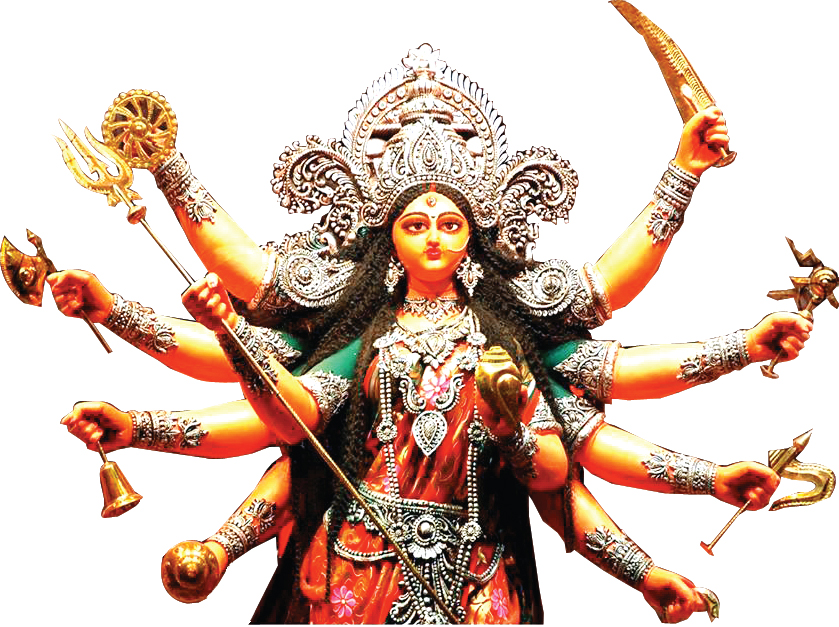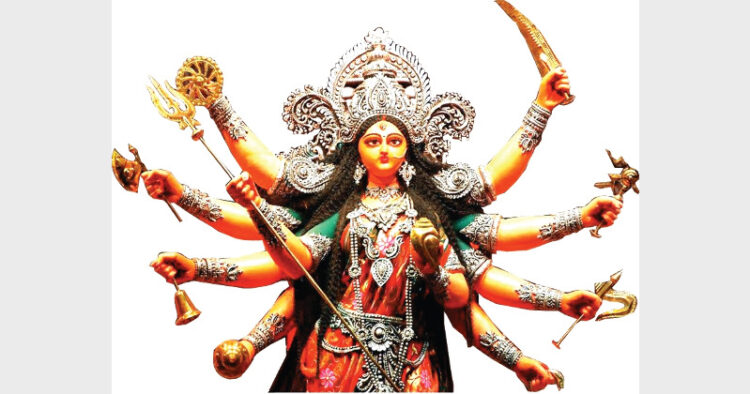 Children, every festival we celebrate has got some significance behind it. The same is in the case of Navratri. During Navratri, we invoke the energy aspect of the Goddess in the form of the universal mother, referred to as “Durga,” which literally means the remover of miseries of life. She is also referred to as Devi (Goddess) or Shakti (energy or power). Truly speaking, our worship of Shakti re-confirms the scientific theory that energy is imperishable.
Children, every festival we celebrate has got some significance behind it. The same is in the case of Navratri. During Navratri, we invoke the energy aspect of the Goddess in the form of the universal mother, referred to as “Durga,” which literally means the remover of miseries of life. She is also referred to as Devi (Goddess) or Shakti (energy or power). Truly speaking, our worship of Shakti re-confirms the scientific theory that energy is imperishable.
Aniket Raja
Why Worship the Mother Goddess?
We think this energy is only a form of the Divine Mother, who is the mother to all. A mother’s glory, her cosmic energy, her greatness and supremacy is unparallel . Just as a child finds all these qualities in his or her mother, similarly, all of us look upon the Goddess as mother. In fact, Hinduism is the only religion in the world, which gives so much importance to the mother aspect of God because we believe that mother is the creative aspect of the absolute.It is rightly said that as God could not be present everywhere so he made mothers.
Why Nine Nights and Days? Navratri is divided into sets of three days to adore different aspects of the supreme Goddess. On the first three days, the Mother is invoked as powerful force called Durga in order to destroy all our impurities, vices and defects. The next three days, the Mother is adored as a giver of spiritual wealth, Lakshmi, who is considered to have the power of bestowing on her devotees the inexhaustible wealth. The final set of three days is spent in worshipping the mother as the Goddess of Wisdom, Saraswati. During the festival nine forms of Durga (Mother Goddess) are worshipped for nine days. These are: |
Celebrated five times a year
Navratri is celebrated five times a year. They are Vasant Navratri, Ashadha Navratri, the Sharad Navratri, Paush and Magha Navratri. Of these, the Sharad Navratri and the Vasant Navratri are the most important. The period is significant for the worship of Maha Saraswati, Maha Lakshmi and Maha Kali.
As per the legend prevalent in East India, Daksha, the king of the Himalayas, had a beautiful and virtuous daughter called Uma. She wished to marry Lord Shiva, since her childhood. In order to win over the Lord, she worshipped him and managed to please him as well. When Shiva finally came to marry her, the tiger-skin clad groom displeased Daksha and he broke off all the relationships with his daughter and son-in-law. One fine day, Daksha organised a yajna, but did not invite Lord Shiva for the same. Uma got so angry at her father”s rude behaviour, towards her husband, that she decided to end her life by jumping into the agnikund of the yajna, where she was united with eternity (since then, she came to be known as Sati). However, she took re-birth and again won Shiva as her groom and peace was restored. It is believed that since then, Uma comes every year with Ganesh, Kartik, Saraswati and Lakshmi and two of her best friends called Jaya and Bijaya, to visit her parent”s home during Navratri.
Stories related to Navratri The legend in North India goes that Mahishasura, the mighty demon, worshipped Lord Shiva and obtained the power of eternity. Soon, he started killing and harassing innocent people and set out to win all the three lokas. The gods in swargaloka appealed to Lord Shiva, to find a way to get rid of the demon. To protect the world from the atrocities of Mahishasura, the Trinity of Brahma, Vishnu and Shiva united their powers and created a divine female warrior, known as Goddess Durga. Mahishasura, when he saw the divine beauty of Goddess Durga, got mesmerised. So fascinated was Mahishasura by Goddess Durga”s beauty that he approached her with the intention of marriage. The Goddess agreed to marry him, but put forth a condition – Mahishasura would have to win her over in a battle. Mahishasura, proud as he was, agreed immediately. The battle continued for nine nights and at the end of the ninth night, Goddess Durga beheaded Mahishasura. The nine nights came to be known as Navratri, while the tenth day was called Vijayadashmi, the tenth day that brought the triumph of good over evil. |
Yet another legend of Navratri relates to the Hindu epic Ramayana. It goes that Sri Ram worshipped Goddess Durga in nine aspects, for nine days, in order to gather the strength and power to kill Ravan. He wanted to release Sita from the clutches of powerful demon king Ravan, who had abducted her. Those nine nights became to be known as Navratri and the tenth day, on which Sri Ram killed Ravan, came to be called Vijayadashmi or Dussehra, signifying Sri Ram’s (good) triumph over Ravan (evil).
Rituals
Besides usual puja etc. there is a special event followed by Hindus during Navratri. It is of feeding
little girls, considering them the
symbol of Goddess Durga and these girls are known as Kanjaks in Haryana and Punjab and Kanya at many
other places.
So children this Navratri lets take a pledge that we will respect women and move ahead with a positive attitude bringing name and fame to our family and the nation as a whole.













Comments